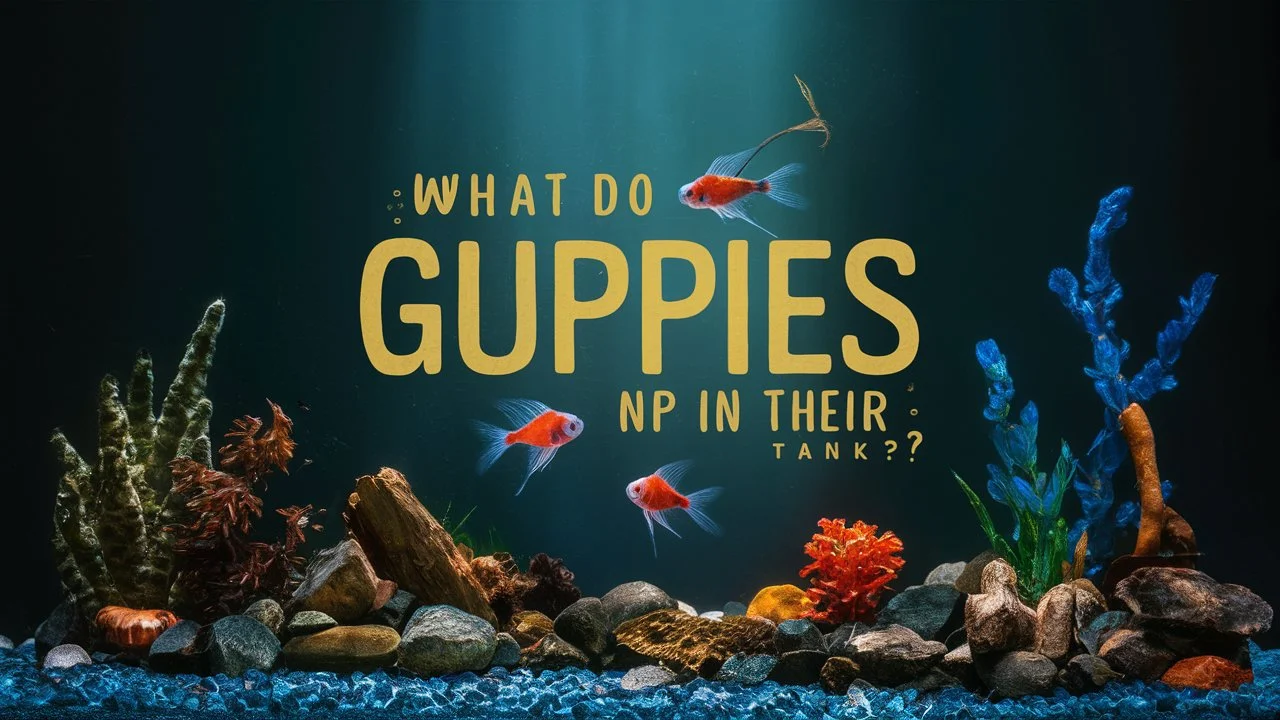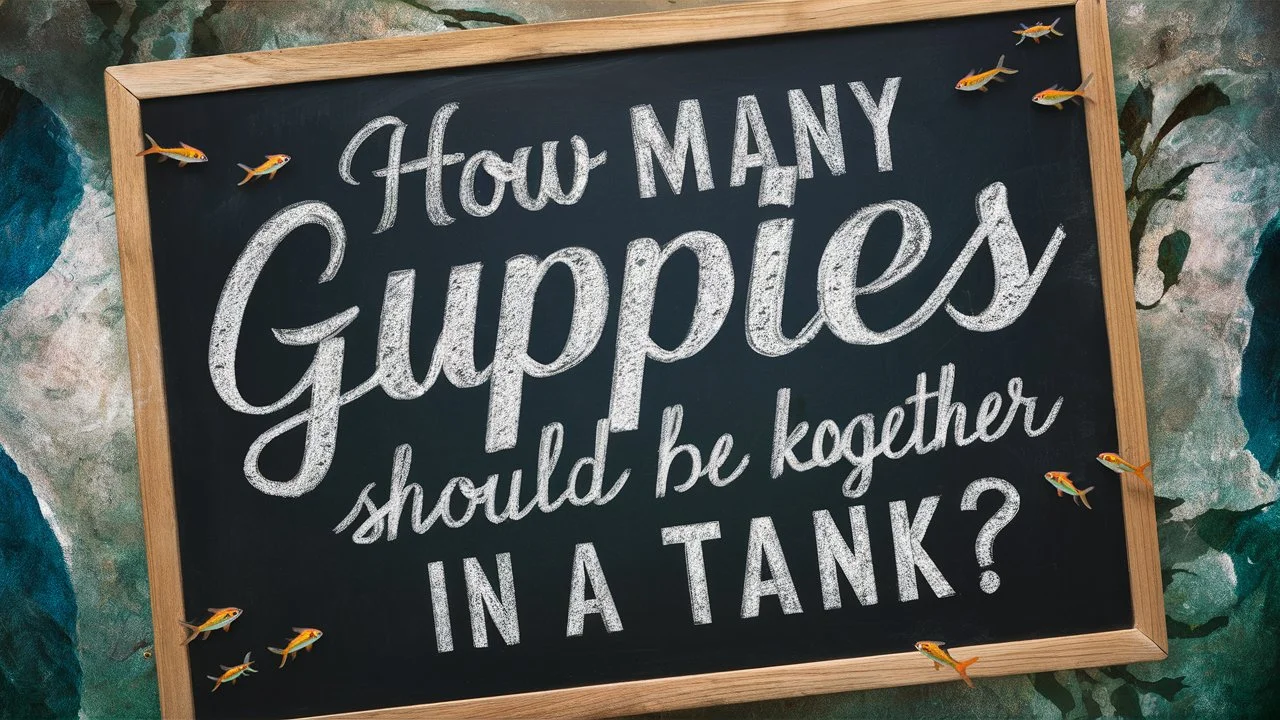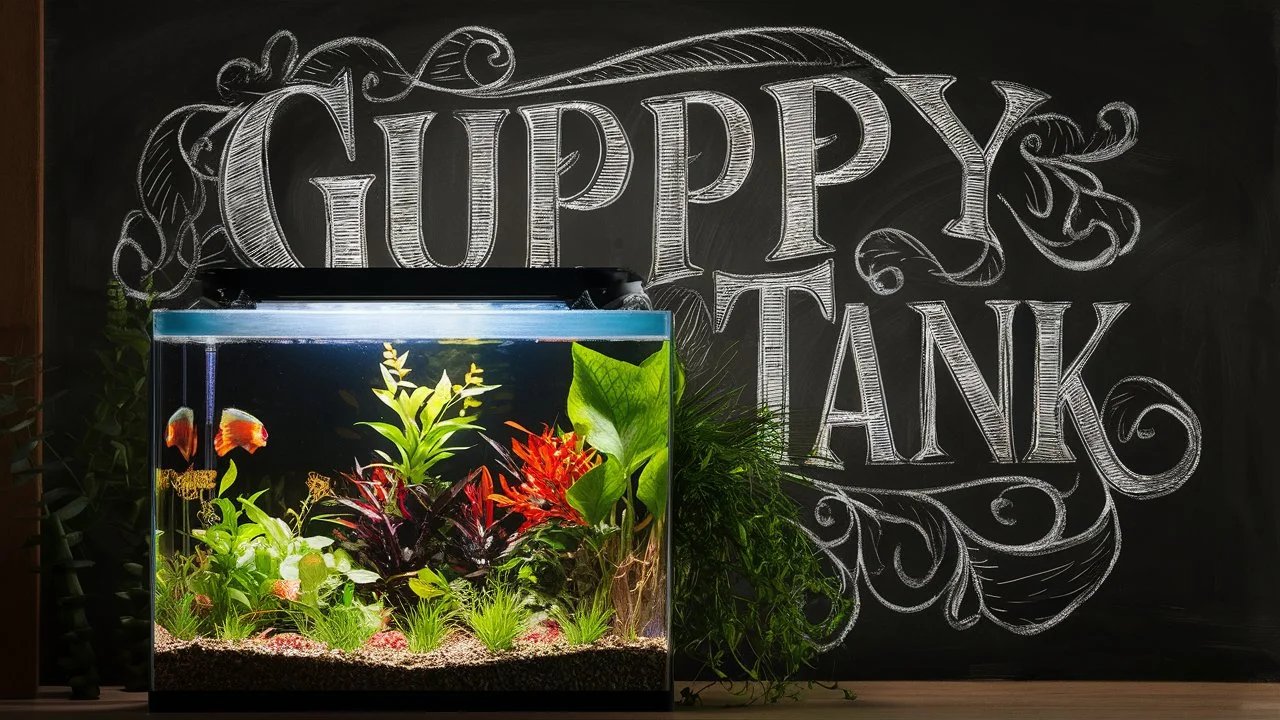Guppies are small and colorful fish that are fun to watch and easy to take care of. If you want to set up a guppy fish tank, it’s simple and doesn’t take much time. This guide will show you how to choose the right tank, set it up and keep it clean so your guppies stay happy and healthy. Let’s get started on creating a nice home for your guppies
To set up a guppy fish tank, start with a 10-gallon tank. Add rinsed gravel to the bottom, set up a filter and fill the tank with clean and conditioned water. Install a heater to maintain a temperature around 78°F (25°C). Add plants and decorations for hiding spots. Let the tank run for 24-48 hours to cycle the water. Slowly introduce the guppies by letting their bags float in the tank for 15 minutes before releasing them. Feed them small amounts once or twice daily, and change about 25% of the water weekly while cleaning the filter regularly.
10 Easy Steps to Set Up a Guppy Fish Tank
Setting up a guppy fish tank is a straightforward process that can be both fun and rewarding. Here’s a detailed guide to help you create a comfortable and healthy environment for your guppies:
Related reading:How many guppies in a 5 gallon tank?

Step 1: Choose the Right Tank
-
- Size: Start with a tank that is at least 10 gallons. Guppies need enough space to swim freely and grow. A larger tank also contributes to more stable water conditions.
- Material: Glass or acrylic tanks are both good options. Glass is more scratch-resistant, while acrylic is lighter and less likely to crack.
Step 2: Add Gravel
-
- Rinse the Gravel: Before adding gravel to the tank, rinse it thoroughly under running water to remove dust and dirt. Avoid using soap or chemicals.
- Layer the Gravel: Spread the clean gravel evenly on the bottom of the tank. A layer about 2 inches thick is ideal as it helps anchor plants and provides a natural look.
Step 3: Install the Filter
-
- Type of Filter: Choose a filter suitable for the size of your tank. Hang-on-back (HOB) filters are popular and easy to maintain.
- Set Up: Follow the manufacturer’s instructions to set up the filter. Make sure it’s running properly to keep the water clean and oxygenated.
Step 4: Fill the Tank with Water
-
- Water Source: Use tap water to fill the tank. Make sure the water is at room temperature.
- Water Conditioner: Add a water conditioner to the tank to remove chlorine and other harmful chemicals that can hurt your guppies.
Step 5: Set Up the Heater
-
- Temperature: Guppies thrive in water temperatures around 78°F (25°C). A submersible heater with an adjustable thermostat is ideal.
- Placement: Place the heater near the filter to ensure even heat distribution. Use a thermometer to monitor the water temperature.
Step 6: Decorate the Tank:
-
- Plants: Live plants like java moss, anubias, or water wisteria provide hiding spots and improve water quality. If you prefer low-maintenance options, use artificial plants.
- Decorations: Add rocks, caves, and other decorations. Ensure they are aquarium-safe and have no sharp edges that can harm the fish.
Step 7: Cycle the Tank
-
- Beneficial Bacteria: Let the tank run for 24-48 hours before adding any fish. This allows beneficial bacteria to establish and makes the water safe for your guppies.
- Water Testing: Test the water for ammonia, nitrites, and nitrates using a water testing kit. Ensure the levels are safe for fish.
Step 8: Introduce the Guppies
-
- Acclimation: Float the bag with the guppies in the tank for about 15 minutes. This helps them adjust to the new temperature.
- Release: After acclimation, gently release the guppies into the tank. Avoid pouring the bag water into the tank to prevent contamination.
Step 9:Feed the Guppies
-
- Food Type: Use high-quality flake food, pellets, or frozen food specifically designed for guppies.
- Feeding Schedule: Feed your guppies small amounts once or twice a day. Only give them as much food as they can eat in about 2 minutes to prevent overfeeding and water pollution.
Step 10: Maintain the Tank
-
- Water Changes: Change about 25% of the water every week to keep the environment clean and healthy.
- Filter Maintenance: Check the filter regularly and clean or replace the filter media as needed to ensure it functions properly.
- Health Monitoring: Watch your guppies for signs of illness, such as changes in behavior, color or appetite. Early detection helps in treating any problems quickly.
By carefully following these steps, you can create a thriving and beautiful home for your guppies. Enjoy the process and the vibrant, lively atmosphere that guppies bring to your space.
What Do Guppies Need in Their Tank?
Setting up a guppy tank involves creating an environment that meets their specific needs. Guppies need enough space to swim freely and reduce stress, so a tank that is at least 10 gallons is recommended. Clean, treated water is crucial, so use a water conditioner to remove harmful chemicals and change about 25% of the water weekly.

A good filter is essential to keep the water clean and provide oxygen. Guppies prefer warm water around 78°F (25°C), so install a submersible heater and use a thermometer to monitor the temperature. A layer of gravel or sand on the bottom of the tank helps anchor plants and creates a natural environment. Adding live or artificial plants, along with decorations like rocks and caves, provides hiding spots and stimulates the guppies. Proper lighting enhances their colors and supports plant growth.
Feed guppies a varied diet of high-quality flake food, pellets, or frozen food, in small amounts once or twice a day. Maintain the right water parameters, aiming for a pH level between 6.8 and 7.8 and moderate hardness. Choose peaceful tank mates, such as tetras or mollies, and avoid aggressive species.
Regular maintenance is essential, including cleaning the tank, filter, and decorations and monitoring the guppies for signs of illness. By following these guidelines, you can create a thriving environment for your guppies, ensuring they stay healthy, vibrant, and happy in their new home.
How Many Guppies Should Be Kept Together in a Tank?
The size of your tank plays a big role in how many guppies you can keep. Guppies need space to swim and explore. A good rule to follow is to have one gallon of water for every one inch of fish. Since guppies are usually about 1.5 to 2 inches long, you can start with this guide:
- Small Tank (5 gallons): Can hold up to 5 guppies
- Medium Tank (10 gallons): Can hold up to 10 guppies
- Large Tank (20 gallons or more): Can hold 20 or more guppies

Male and Female Guppies
Guppies can breed very quickly, so it’s important to consider the mix of males and females in your tank.
- All Male Guppies: If you keep only male guppies, they will show off their bright colors and won’t breed.
- All Female Guppies: Female guppies are usually larger and less colorful, and they won’t breed without males.
- Mixed Guppies: If you have both males and females, be prepared for baby guppies! A common ratio is one male to two or three females to prevent the males from stressing the females.
Providing Enough Space
Guppies are active fish that love to swim. Make sure your tank has plenty of space for them to move around. Adding plants and decorations can also give them places to hide and explore, making them feel more at home.
Maintaining Water Quality
With more guppies in your tank, it’s important to keep the water clean. Regular water changes and a good filter are key to maintaining healthy water conditions. Check the water for ammonia, nitrites, and nitrates, as these can harm your fish if they get too high.
Watching for Overcrowding
Having too many guppies in one tank can result in overcrowding. This can cause stress, illness, and poor water quality. If you notice your guppies are not swimming freely or seem stressed, it may be time to reduce the number of fish in your tank.
Conclusion
Setting up a guppy fish tank is easy and fun. Start by choosing the right tank size, adding clean water, and setting up a filter and heater. Decorate with plants and hiding spots to make your guppies feel at home. Remember to cycle the tank before adding your guppies to ensure the water is safe. Once your tank is ready, introduce your guppies slowly and watch them thrive in their new environment. With proper care, your guppies will be happy and healthy

4 thoughts on “10 Easy Steps to Set Up a Guppy Fish Tank”